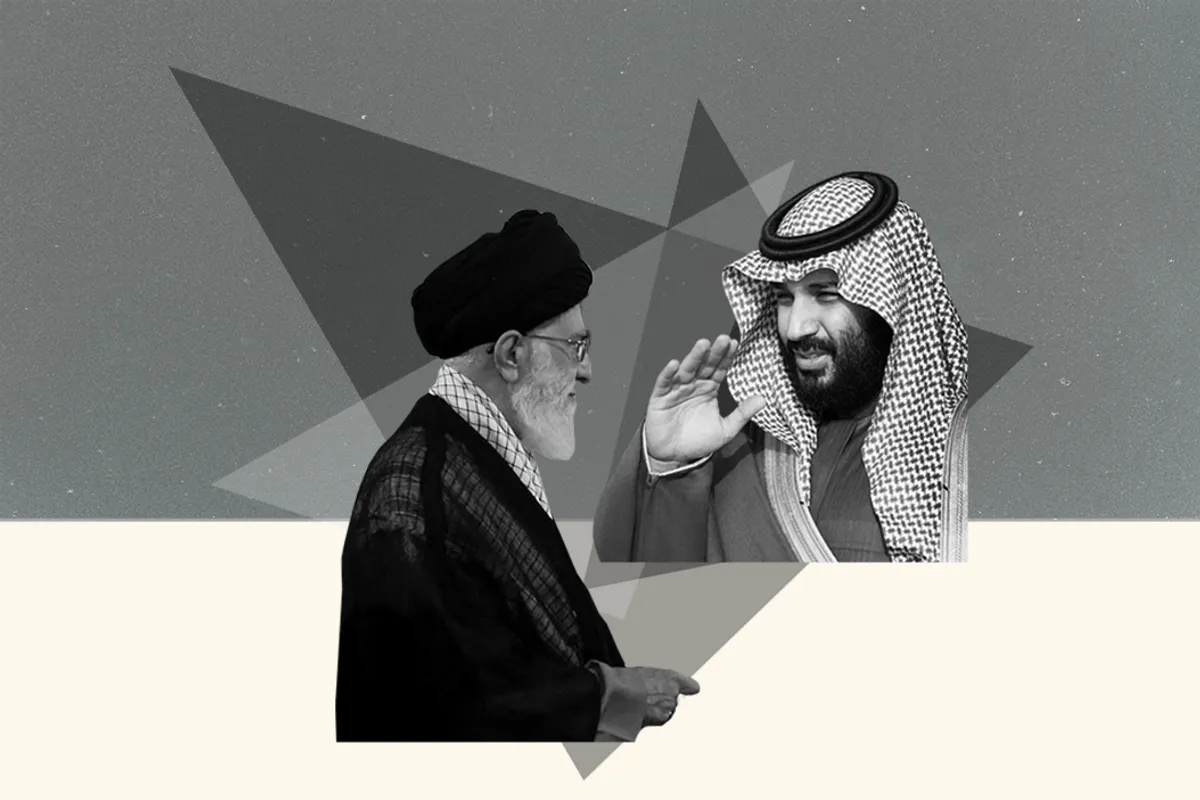A threadbare veil of peace hangs over the Middle East after the Iran-Israel standoff. Israel’s recent attack on the Syrian Ministry of Defense has once again exposed the fragility of the region. With the rapid turnover of alliances and foregoing mutual identity in favor of national interest, a prisoner’s dilemma grips the region in a chokehold.
An oversimplified definition of the prisoner’s dilemma accurately explains how Saudi Arabia, under the economic and military incentives of the West (particularly the United States and Israel), stays confrontational with Iran. The perpetual cycle has been shaping the region since the mid-1970s. Heightened regime insecurity and liquid alliances have led to a stagnated approach, nullifying communal identity in the face of nationalism.
In the definitive context of the prisoner’s dilemma, the Middle Eastern states have been proven to prioritize short-term gains based on self-interest rather than long-term goals based on cooperation and integration. The Gulf Cooperation Council has once been hailed as a hallmark of the region’s steps towards conceptualizing shared economic, strategic, and diplomatic norms. Yet no exact strategic or political objective towards a lasting peace in the area has been achieved so far.
Diplomatic Dilemmas
Using proxies to create a web of entanglement rather than diplomatic transparency has pulled the plug on any notion of Arab unity and led to interventionist foreign agendas for each of the states mentioned. Iran and Saudi Arabia’s historical rivalry finds its roots in the 1979 revolution in Iran.
The proxy war has encompassed Lebanon, Iraq, Bahrain, Syria, and Yemen. The Iran-Iraq War from 1980-1988 saw the Saudis supporting Iraq, while Iran’s Al-Quds forces started expanding outwards. The war saw a clash between sectarianism and, through Saudi Arabia’s backing, a monarchism vs theocratism paradigm as well.
Following the turn of the last two decades, Iran has exemplified its belief in pursuing regional hegemony through its ‘Forward Defense’ strategy. Heightened threat perception, complemented by military exercises, allows Iran to posture with resistant compelence towards the region. Under the tenure of President Rouhani from 2013-2021, there was a notable shift towards a less aggressive approach, and a revival of pragmatism was noticeable.
However, the post-Rouhani government, coupled with the recent back-and-forth retaliation with Israel and the lack of decisive support, has cemented the fact in Iranian thinking that it will never be among proper allies in the region. Already, the ideological prestige as inheritors of the Persian empire sets it apart from neighbouring states in terms of its attitude. An attitude that also allowed the Iranians to show stubborn resistance to the might of two nuclear nations, casting a shadow over their ambitions.
Power Competition
Saudi Arabia’s presence in the region reminds everyone that a power tussle between the two is inevitable. The insecurity stems not from each having hegemonic designs, but rather from their national interests being guided by external alliances. Ever since the evaporation of the ‘Arab League’ and the concept of Arab unity, the Saudi government has preferred the security umbrella of the West, in particular the United States, rather than working towards regional integration frameworks and easing tensions.
During President Trump’s first tenure, the US encouraged Riyadh to pursue a ‘maximum pressure’ doctrine towards Tehran. This included support for proxy escalation and deliberate isolation of Iran. A breakthrough was observed in the ties between the two countries in April 2023 when China mediated a diplomatic détente and revived previously abandoned communication channels.
It was done in the spirit of revitalizing the region through an economic development paradigm. It might have acted as the conclusion to Tehran’s era of isolation had it not been for the recent hostilities initiated by Israeli offenses against Iran, which were backed by the United States. Among the retaliatory strikes against the American-Israel nexus, an American military base in Qatar was also targeted by Iran.
This prompted Saudi Arabia to strongly condemn the attack and offer its resources as support in countering any action against Iran. The spirit of détente had evaporated because of collateral action, just like it had once before between the USA and the USSR during the Cold War. Bringing both countries into a pre-rapproachment stage in diplomatic engagements. This might also be a potential hurdle in Saudi Arabia’s Vision 2030 project.
A Cyclical Reality
Future implications for these two countries include potential entrapment and a repeated cycle of confrontation if a diplomatic outlet is not revived. Saudi Arabia’s recent air defense investments, alongside accusations made by Iran for providing passive intelligence to the Israelis, are a direct hook towards a miscalculation between the two. Especially, when Iran’s rationale now echoes a deterrence-through-retaliation doctrine.
The situation presents itself as a fear of encirclement by both countries, Iran due to being in the proximity of Western allies, and Saudi Arabia, being insecure due to Iranian proxies operating in neighboring countries. Despite that fact, it is, in actuality, a deliberate unwillingness to work on common grounds and give more credence to power expansion, either economic, political, or military.
Traditionally, Saudi Arabia has relied on the American security umbrella to curb any misadventure against itself by other Gulf countries. There now exists a legitimate probability of it being pulled into an arms race against its will after Iran’s newfound confidence following the ceasefire with Israel. A conflict that Iran perceives as a victory.
The prisoner’s dilemma glaringly sits on the mantle of choosing regional competition and an arms race rather than diplomatic cooldown and seeking out a regional stability framework.

Anas Yamin
Anas Yamin is an International Relations Student (at Air University). He is interested in foreign policy analysis, arms control, conflict transformation, and power politics.



